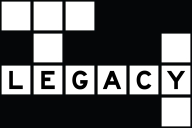You have /5 articles left.
Sign up for a free account or log in.
Using an antiracist lens to see and root out bias, inequities and exclusion in institutions of higher education has been a welcome growing trend. One area rarely mentioned, however, is using such a lens to transform budgets, the budgeting process and policies and practices that guide financial decisions.
Dr. Camara Phyllis Jones, a physician, epidemiologist and antiracism activist, emphasized in her paper “Confronting Institutionalized Racism” in Phylon the importance of “naming the unnameable” to dismantle racism and other forms of oppression—to make visible the invisible. In this essay, we will name and make visible some common budgeting norms—ways of defining, determining and allocating resources that are related to institutional culture and the distribution of power—and how they help enable racism. We will also offer ideas for developing new, antiracist norms.
Six Key Norms and Their Impact
Budgets are instruments of power that reflect an institution’s commitments, values, priorities and culture. At its core, budgeting is about making choices about how to allocate limited resources. Budgets and the budget process reveal which programs are valued and who benefits from those programs, as well as the institution’s level of commitment to antiracism and diversity, equity and inclusion. In short, they mirror power, culture, consensus and conflict, and colleges should consider their budget a critical policy instrument.
Below we describe six norms that motivate budget decisions, frame real and perceived budget constraints, and shape the budget process itself. After describing each entrenched budget norm, we offer a new norm for consideration.
No. 1: One size fits all is a norm in higher education that results in resources being allocated in a standardized way in an effort to establish equality among divisions, offices, departments and programs. It is commonly believed that this norm will produce a fair distribution of resources. The actual result, however, is that some areas of a college or university do not get the resources they need, while others get more than they need. This norm creates an illusion of fairness and equality, perpetuating the myth of meritocracy.
In the context of academic departments, older disciplines, with long-standing departments and programs, may accumulate more than their fair share of funding and resources, regardless of the number or diversity of students served. Newer disciplines, particularly interdisciplinary programs that center on the study of marginalized groups, are not resourced adequately despite their contribution to our understanding of oppression and how to dismantle racism.
New norm: Equity, not equality. Fairness means everyone gets what they, in fact, need, even if it requires an uneven distribution of resources.
No. 2: Survival of the fittest describes the process of requiring people to ask, usually in writing but sometimes verbally, for financial resources from a limited number of people in authority who make the key budget decisions. Often, those in authority make those decisions independently of broader considerations about institutional goals and objectives. The criteria for decision making are not always transparent and often not agreed upon by the broader community. In addition, the requests and the outcomes of the budgeting process are rarely made public. That results in managers not having the opportunity to hear each other’s budgetary and resource needs and priorities, which ultimately encourages a mind-set of competition and scarcity.
New norm: The whole is greater than the sum of its parts. Opportunities to converse and exchange information about resource needs will provide various campus units and their members with a more holistic awareness and create opportunities for collective decision making.
No. 3: Don’t upset the applecart is a norm based on the idea that you should avoid proposing new ideas, programs and structures that threaten the status quo. This norm privileges the past over the present, because the focus is on ensuring that existing practices, processes, policies and programs are resourced over new and innovative ideas. Often this privileging of the past over the present is fueled by a concern not to upset or disrespect the work of senior faculty and staff members.
The consequence of this norm is a belief that change can only happen through additive growth to what already exists, which results in practices and programs remaining static, if not antiquated. It also results in the avoidance of making difficult decisions to prune or sunset initiatives. And it leads to the use of delay tactics—people support any new initiatives in theory alone but postpone their implementation with the excuse of not having funding for them because of the need to support existing programming. Ultimately, this norm stifles innovation and antiracism.
New norm: Turn over a new leaf. Making hard decisions prompts action; without them, nothing happens.
No. 4: Beggars can’t be choosers is a norm that colleges and universities have abided by since most of them were founded. Since higher education institutions have historically been nonprofit enterprises reliant on donor funds to make the extra money needed to support and expand programming, they’ve had a “take whatever you can get”—or whoever is willing to give it—mentality. In other words, donor funds should be accepted regardless of the limitations they might place on a college or university or any possible conflicts of interest with the donor. This norm discourages institutional administrators from working with donors to ensure that the money can be used in a way that is squarely in line with the mission and vision of the college, particularly DEI and antiracism efforts.
Historically, the impact of this norm has included accepting gifted land that was stolen from Native Americans to build colleges and universities designed to make higher education more accessible to some Americans while at the same time oppressing others. More recently, revelations about the role of major donors in fueling the opioid crisis and environmental degradation have prompted some institutions to think more critically about their advancement programs. Will these revelations finally disrupt this norm of beggars can’t be choosers?
New norm: Choose wisely. Establish criteria and guidelines that align with the institutional mission, vision and values.
No. 5: Keeping up with the Joneses is a more recent norm that involves colleges and universities looking to so-called peer institutions to inform macro-level financial decisions: tuition setting, comprehensive fees, large-scale infrastructure investments and so forth. The ramification of this norm is that the most important data points being used to make practice and policy decisions are external. Colleges and universities typically create comparison groups based on institutional type, size, ranking and endowments. Even though administrative leaders use comparison groups of other colleges and universities to inform various decisions, they may often not select those in the group based on their own institution’s specific mission, and vision, and its DEI and antiracist commitment. This practice inadvertently creates groupthink among institutions and maintains budgetary norms and financial policies that reinforce inequities at the system level.
New norm: Keeping up with the change makers. Let’s compare ourselves to institutions we aspire to be like in terms of DEI and antiracism.
No. 6: Leave the past behind is a norm that prevents us from recognizing and redressing errors of the past. Faculty, staff and administrators are usually embarrassed or ashamed of the imperfections and bias of the past, and many institutions wrestle with how—and whether—to admit to a racist history. Which departments and programs have larger endowments or personnel rosters, or more preferred locations on the campus, are all decisions based on the past. The fact that many colleges sit on unceded ancestral lands of Indigenous peoples to whom at most verbal tributes are paid, rather than property taxes, is another poignant example.
To question those allocations, however, leads to discomfort around questions of equity, because to admit that the starting line is unfair is to beg the question of why it is unfair. It underpins feelings of white fragility, where people of historical identities associated with privilege are uncomfortable talking about race because it invokes a sense of unearned power, of shame about the past. That isn’t an effective way to learn from the past or to proceed in antiracist budgeting.
New norm: Learn from the past to pave a better future. Remembering, acknowledging and correcting the past leads to change.
We encourage you to consider the consequences of these budgeting norms on your campuses and to continue naming other problematic ones. But don’t stop there. Actively work to develop new norms that foster diversity, equity, inclusion and antiracism. Change and transformation happen when you reimagine business as usual.







